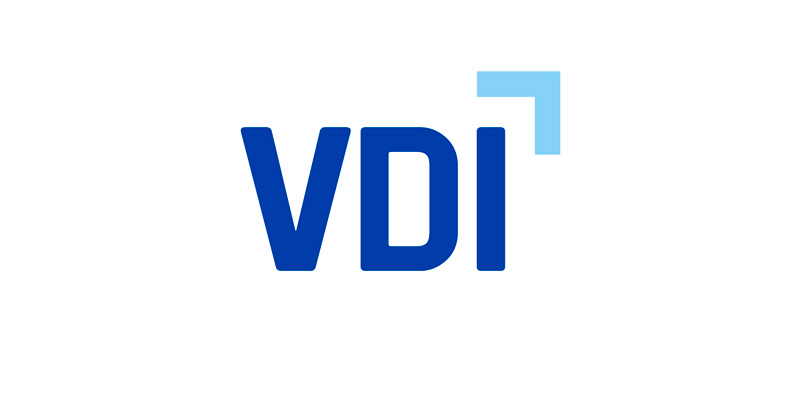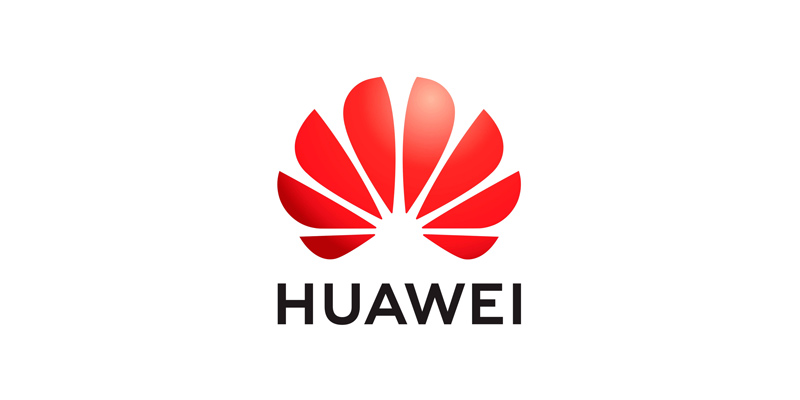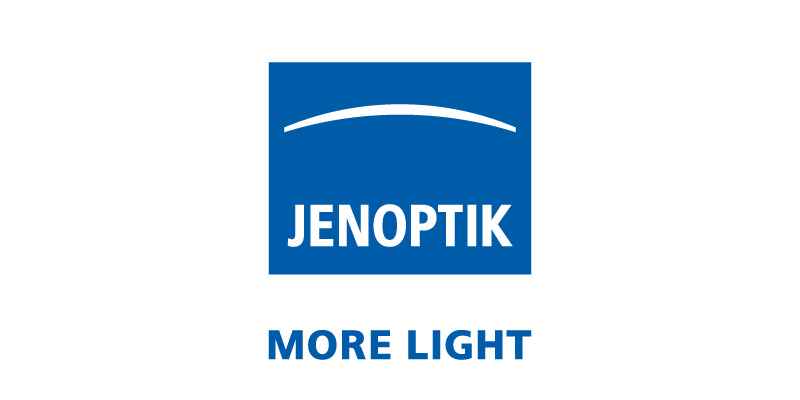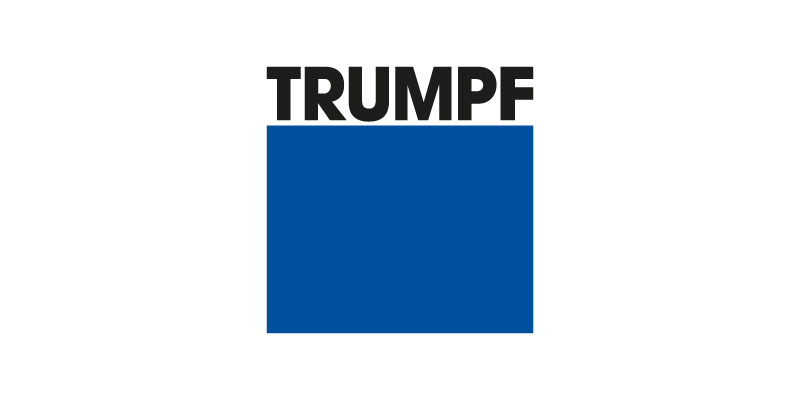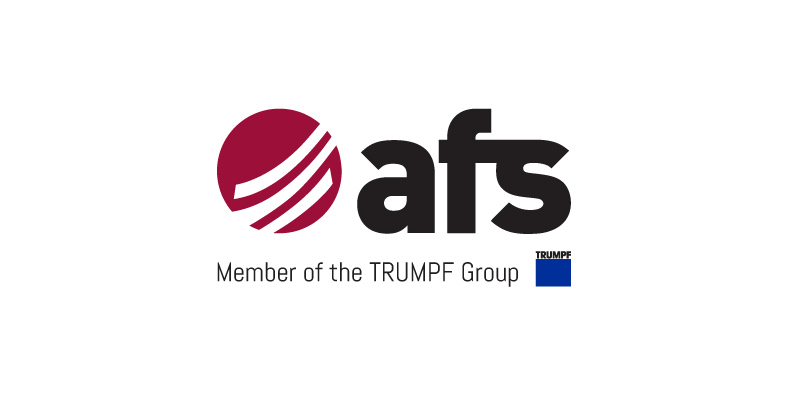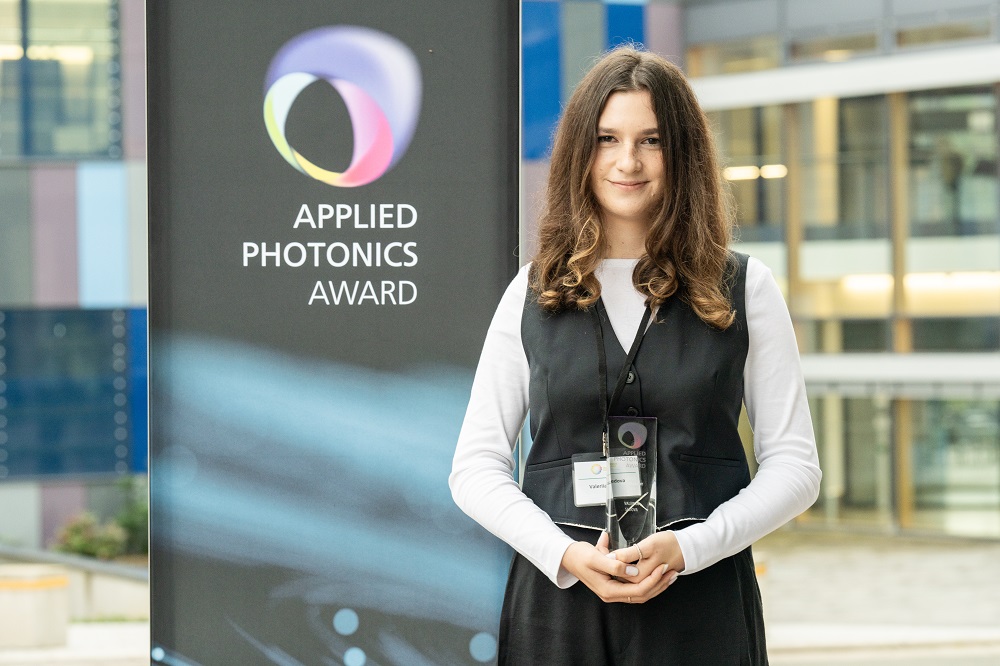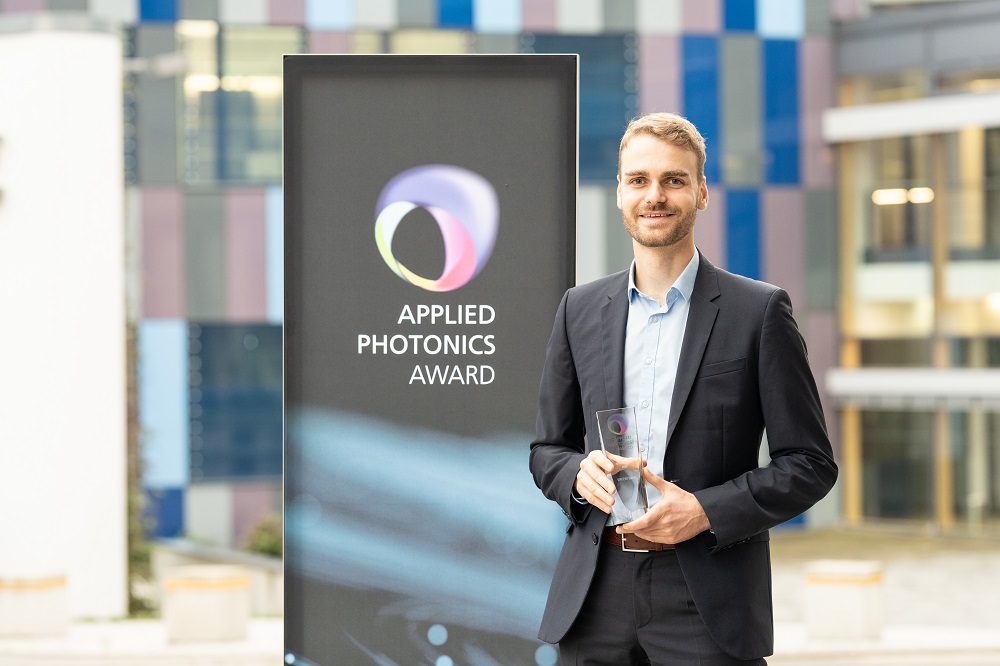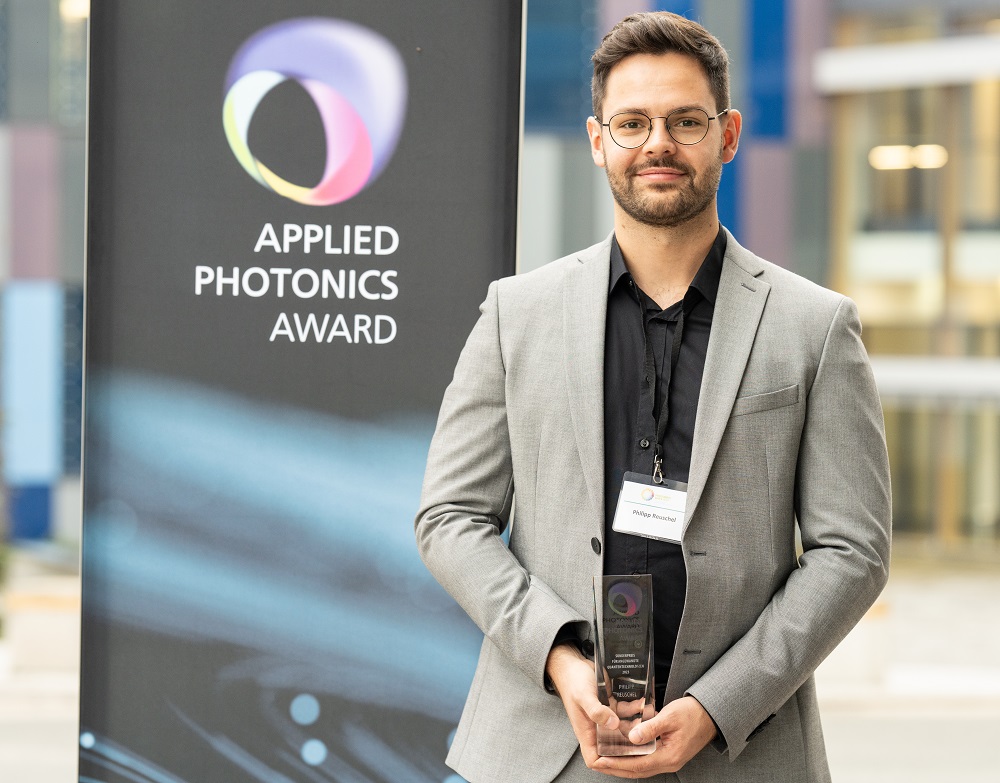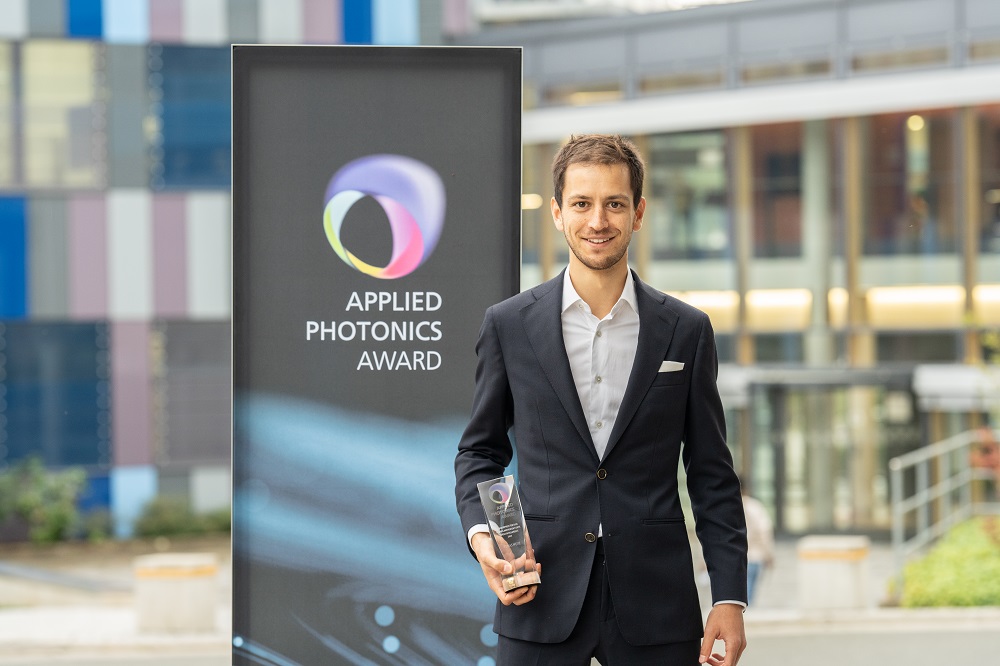Fraunhofer IOF Young Researcher Award for Innovative Theses Presented
"Applied Photonics Award 2023": These are the winners
How can computers become even more powerful with the help of light while consuming less energy? How can we produce tiny micro-optics faster and more cost-effectively in the future? And how can findings from nano-optics be applied to the industrial use of quantum sensors? The prize winners of this year's "Applied Photonics Award" are addressing these and other questions about the future. The Young Researcher Award was presented to the five award winners of 2023 on October 12 as part of the "Photonics Days Jena".
Passion for light - that is Fraunhofer IOF. The institute wants to share its enthusiasm for the fascinating world of photons with young researchers. To this end, the institute has launched the "Photonics Days Jena", a career and networking event for students, and the "Applied Photonics Award". The award honors outstanding final theses in the field of optics and photonics and was presented today as part of the career event. Prof. Dr. Anke Kaysser-Pyzalla, Chairman of the Executive Board of the German Aerospace Center (DLR) and keynote speaker at this year's "Photonics Days Jena", presented the award to the prize winners together with Dr. Katja Böhler, State Secretary for Research, Innovation and Economic Development in Thuringia.
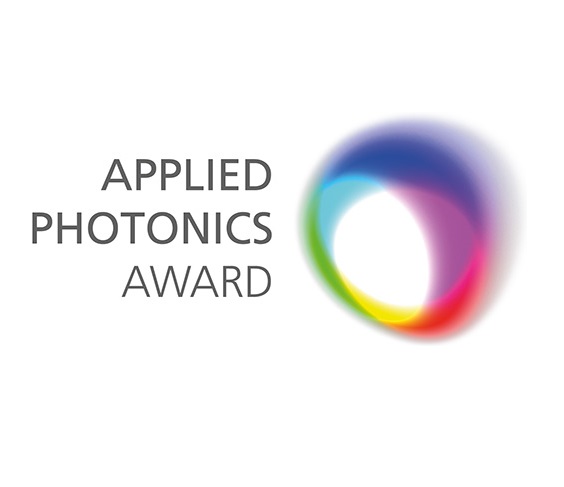
A jury of experts consisting of representatives from science and industry had previously selected the award-winning theses. Three theses were awarded in the categories Bachelor, Master/Diploma and Dissertation. In addition, the jury awarded two special prizes this year: one for an outstanding work in the field of applied quantum technologies and one for a basic research work. The winners of the 2023 Award are:
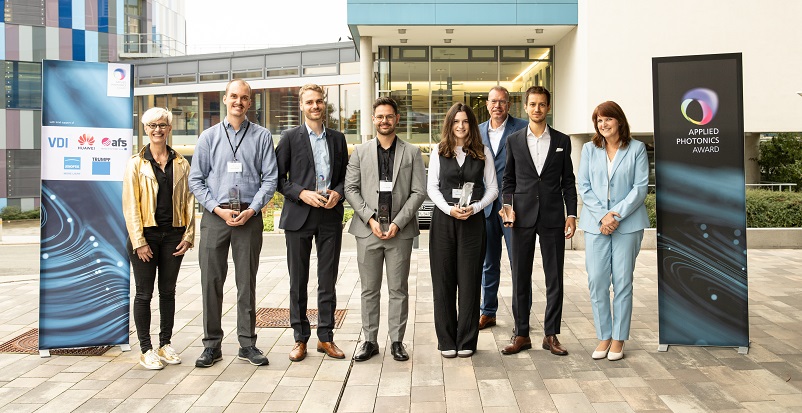
Best Bachelor Thesis (1.000 €)
Manuel Klockow (Friedrich-Schiller-Universität Jena): "Evaluating Diffractive Neural Network Architectures"
Artificial neural networks are computer programs that attempt to work like the human brain to solve problems. Traditionally, information in such networks is processed with the help of electricity. In contrast, so-called diffractive neural networks offer a new, exciting approach because: they use light instead of electricity to process information. Diffractive neural networks work very quickly while consuming very little energy. The high speed is achieved by the fact that information can propagate through the network in parallel and at the speed of light. Such networks are therefore particularly interesting where the energy and performance of a hardware are limited, such as in autonomous driving.
In his bachelor thesis, Manuel Klockow investigates the performance of different architectures of such diffractive neural networks. He pursues his investigation with the help of simulations. With his work, Manuel Klockow also introduces a new type of diffractive neural networks whose performance exceeds that of the networks investigated by previous research.
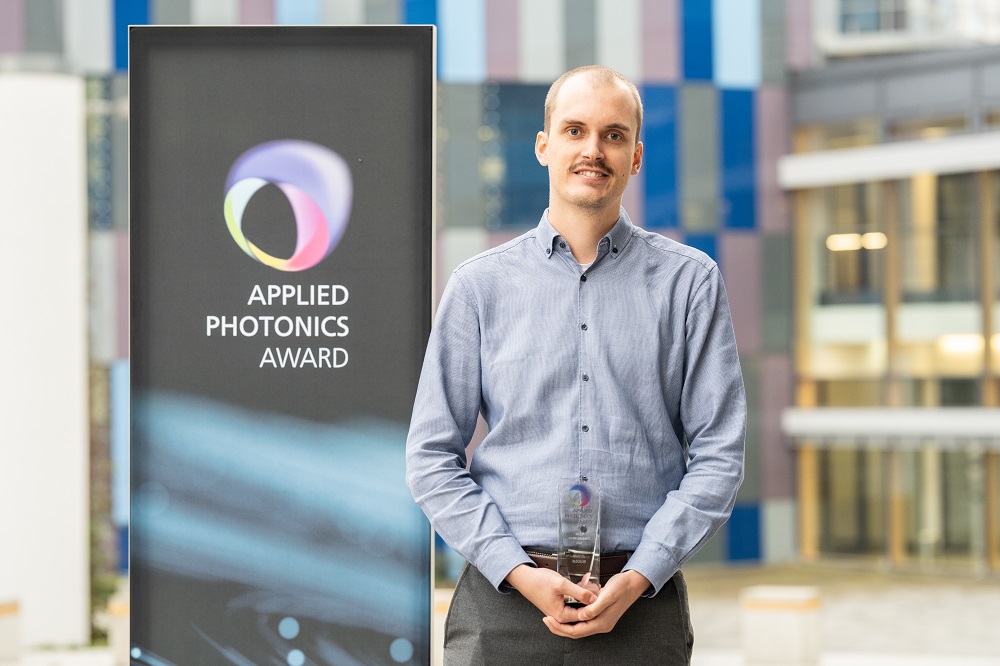
Best Master Thesis (2,000 €)
Valeriia Sedova (Friedrich-Alexander-Universität Erlangen-Nürnberg): "Modeling of thick photoresist for grayscale lithography application"
In her master's thesis, Valeriia Sedova addresses a critical challenge in micro-optical component fabrication: the lack of a well-established model for thick photoresist in grayscale lithography. Her research focuses on the development of a specialized method for manufacturing microscopic optical components with enhanced precision and efficiency, specifically tailored to address this gap in the field. At the same time, Valeriia Sedova's research lays the foundation for the integration of so-called deep learning techniques into the manufacturing process. With their help, predictions of individual structural shapes can be made, optimizing the accuracy of the product.
Micro-optical components are used in a wide range of industries, including telecommunications, medical imaging and consumer electronics. Valeriia Sedova's research is helping to make production in these and other application areas faster and cheaper in the future.
Best Dissertation (3,000 €)
Dr. Vincent Hahn (Karlsruher Institut für Technologie): "3D Laser Micro- and Nanoprinting: Finer, Faster, and More Affordable"
From small tools for everyday use to large machines for industrial mass production, 3D printing is becoming increasingly popular and its range of applications is constantly expanding. Compared to conventional manufacturing methods, such as injection molding, 3D printers have clear advantages: Customized prototypes for components can be produced in a very short time and costly molds can be avoided. However, in the production of small-structured components such as micro-optics, traditional manufacturing methods are usually used.
In his dissertation, Vincent Hahn therefore addresses the question of how 3D printing processes can also be implemented more quickly and cost-effectively for fine components. To this end, he is developing two novel 3D printers as well as the appropriate coatings. The processes developed by Vincent Hahn increase the throughput as well as the printing speeds of 3D printing, making it more competitive with conventional manufacturing methods. In the work, mechanical metamaterials were produced with the two novel 3D printers. In the future, they could also be used to produce micro-optics, for example, which are already being used today in facial recognition systems for smartphones.
Prize of the Jury for Applied Quantum Technologies (1,500 €)
Philipp Reuschel (Universität Siegen): "Vector magnetometry based on polarimetric optically-detected magnetic resonance"
So-called vector magnetometry is a method to measure magnetic fields. It is used to determine in which direction a magnetic field points and how strong it is. This method is used, for example, in navigation, materials and life sciences, and precision metrology. Various sensitive magnetic field sensors exist for this purpose, but typically suffer from high technical complexity and low spatial resolution.
In his master thesis, Philipp Reuschel presents a novel approach to measure the direction of even tiny magnetic fields. These are especially important for state-of-the-art quantum technologies. For his method, Philipp Reuschel uses special diamond crystals that have tiny imperfections in the crystal. These flaws function like mini compass needles and can thus indicate magnetic fields. Microwaves and laser light can also be used to determine the strength and direction of the magnetic field. The approach presented by Philipp Reuschel combines high sensitivity with nanoscale spatial resolution and simultaneous robustness against environmental influences.
Prize of the jury for basic research work in an important future field of the modern information society (1,500 €)
Dr. Tobias Weitz (Friedrich-Alexander-Universität Erlangen-Nürnberg), "Lightwave electronics in graphene"
Computers have become an indispensable part of our modern information society. The most elementary component of any computer are the so-called logic gates. They process logical states (i.e. a 0 or a 1) so that these in turn result in new states (i.e. 0 or 1). Up to now, such logic gates have usually been built from so-called semiconductor-based transistors. Here, logic operations are performed with the help of microwave electrical signals. The problem is that the further development of their clock rate has now reached its limit. As a result, logical operations can hardly run faster than a nanosecond. Recently, however, we have found ourselves in a development of algorithms, e.g. for artificial intelligences, which will reach their limits without an extreme increase in the clock rate and thus in the computing capacities.
Tobias Weitz addresses this problem in his dissertation. In his work, he demonstrates an approach for light-field driven logic gates. They are able to process logic states of 0 or 1 within one femtosecond. A femtosecond is one millionth of a billionth of a second. For this purpose, Tobias Weitz uses extremely short and intense laser pulses. In the future, this technology could be used in state-of-the-art computer processors as well as other digital devices, thus not only overcoming the previous limit of the clock rate, but dramatically increasing it.
About the "Applied Photonics Award"
The "Applied Photonics Award" emerged from the "Green Photonics Young Scientist Award" - since 2018 with a new look and new content. It is organized by the Fraunhofer Institute for Applied Optics and Precision Engineering IOF in Jena, Germany. The institute has been conducting application-oriented research in the fields of optics and photonics for over 25 years. As key technologies, these disciplines contribute to solving upcoming challenges for society, economy, and industry. In order to honor particularly original and innovative theses dealing with the topics of applied photonics, this young researcher award was created.
The "Applied Photonics Award" is presented in 2023 with the kind support of the Association of German Engineers (VDI) as well as the companies Active Fiber Systems, JENOPTIK, Huawei Technologies and TRUMPF.
